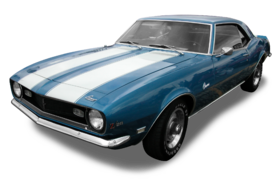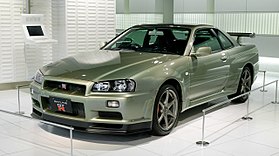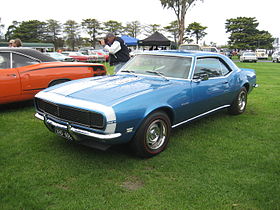Pontiac
This article is about the automobile brand. For other uses, see Pontiac (disambiguation).
 |
|
| Division of General Motors | |
| Industry | Automotive |
| Fate | General Motors Chapter 11 reorganization |
| Successor | Chevrolet Buick GMC |
| Founded | Pontiac, Oakland County, Michigan, United States (1926) |
| Defunct | October 31, 2010 |
| Headquarters | Detroit, Michigan, United States |
Key people
|
Semon "Bunkie" Knudsen John Z. DeLorean |
| Products | Automobiles |
| Parent | General Motors |
| Website | www |
The Pontiac cars overtook its Oakland parent in popularity and supplanted the Oakland brand entirely by 1933. Pontiac became a companion make for Chevrolet. Pontiac was sold in the United States, Canada, and Mexico by GM. Pontiac was advertised as the performance division of General Motors for many years, while specializing in mainstream vehicles.[1] Pontiac was relatively more popular in Canada, where for much of its history it was marketed as a low-priced vehicle.
In early-2009, amid financial problems and restructuring efforts, GM announced it would discontinue manufacturing and marketing vehicles under the Pontiac brand by the end of 2010 and focus on four core brands in North America: Chevrolet, Buick, Cadillac, and GMC. The last Pontiac badged cars were built in December 2009. Franchise agreements for Pontiac dealers expired October 31, 2010.[5]





